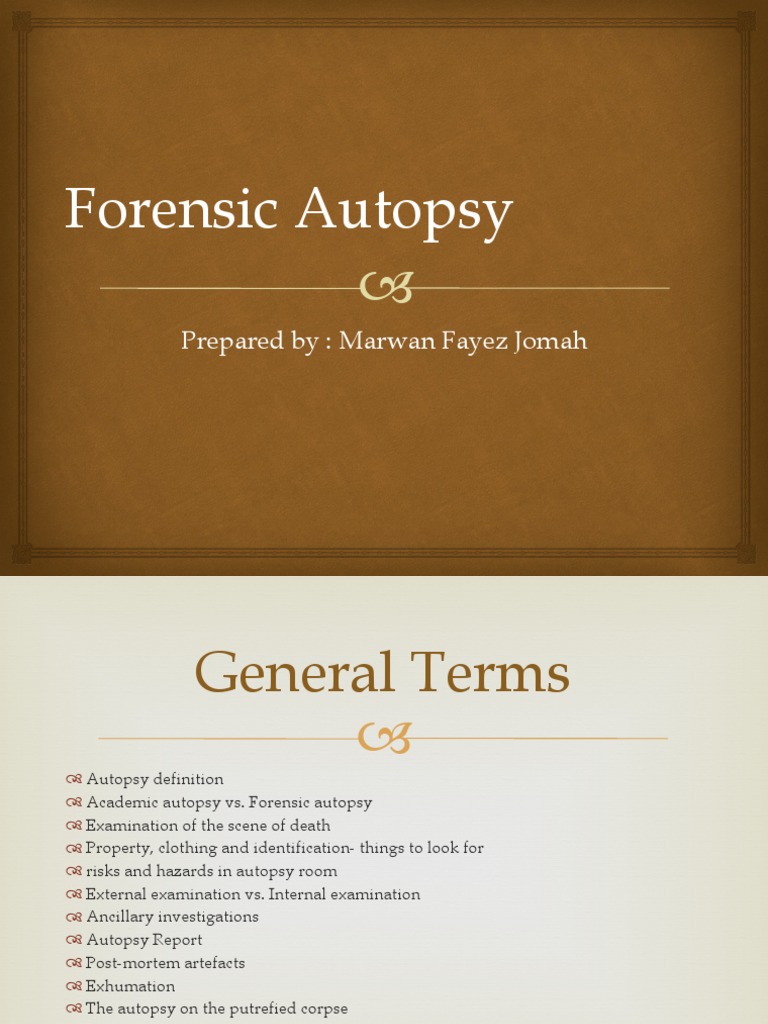A forensic autopsy, a cornerstone of medico-legal investigations, represents a meticulous post-mortem examination performed to ascertain the cause, manner, and time of death. Far from a macabre exercise, it is a critical tool for unraveling the circumstances surrounding a death, providing crucial information for legal proceedings, public health initiatives, and the advancement of medical knowledge. The procedures employed are dictated by established protocols that prioritize both accuracy and the preservation of forensic evidence.
Defining the Scope: Beyond the External Examination
While an external examination forms the initial phase, a true forensic autopsy extends far beyond a superficial assessment. It encompasses a comprehensive internal examination, often involving specialized techniques like toxicology screening, histology, and potentially molecular diagnostics. The primary objective is to correlate observed anatomical findings with available contextual information – the decedent’s medical history, witness statements, crime scene reports, and other pertinent investigative data.
The external examination involves documenting every observable detail, including the presence and nature of injuries (abrasions, lacerations, contusions, incised wounds, projectile wounds), the state of decomposition, any identifying marks (tattoos, scars), and evidence of medical intervention. Rigor mortis, livor mortis, and body temperature are carefully assessed to estimate the post-mortem interval, offering a timeline of events.
Internal Examination: A Systematic Dissection
The internal examination involves a systematic dissection of the body, organ by organ. Standardized techniques, such as the Rokitansky or Virchow method, are often employed to ensure a thorough and complete evaluation. The thorax and abdomen are opened, and the organs are removed, weighed, measured, and meticulously examined for any abnormalities – signs of disease, trauma, or toxic exposure. Microscopic examination of tissue samples (histology) is routinely performed to detect cellular-level changes indicative of disease processes or injury.
Toxicology: Unmasking the Silent Killer
Toxicology plays a vital role, particularly in cases of suspected poisoning or drug overdose. Samples of blood, urine, vitreous humor (fluid from the eye), and tissue are analyzed to identify the presence and concentration of drugs, alcohol, and other toxins. Interpretation of toxicological findings requires careful consideration of factors such as post-mortem redistribution (the change in drug concentrations after death) and tolerance. The absence of evidence can be just as revealing as positive findings, potentially pointing towards alternative causes of death.
The Importance of Documentation: A Chain of Custody
Meticulous documentation is paramount throughout the entire process. Detailed notes, photographs, radiographs (X-rays), and sketches are meticulously recorded to preserve a comprehensive record of the findings. This documentation forms the basis of the autopsy report, a legal document that summarizes the findings, provides an opinion regarding the cause and manner of death, and is admissible in court.
A strict chain of custody must be maintained for all evidence collected during the autopsy, including tissue samples, clothing, and personal effects. This ensures the integrity of the evidence and its admissibility in legal proceedings. Any deviation from standard protocols or breaks in the chain of custody can compromise the validity of the autopsy findings.
Manner of Death: Categorizing the Circumstances
The manner of death refers to the circumstances surrounding the death and is categorized into one of five classifications: natural, accident, suicide, homicide, or undetermined. Natural deaths are those caused solely by disease. Accidents result from unintentional events. Suicide involves intentional self-harm. Homicide refers to death caused by the actions of another person. Undetermined is used when the available information is insufficient to classify the manner of death.
Determining the manner of death often requires careful consideration of both the anatomical findings and the circumstantial evidence. For example, a death caused by a gunshot wound could be classified as suicide, homicide, or accident, depending on the circumstances surrounding the shooting.
Specialized Autopsies: Tailoring the Approach
Certain cases may necessitate specialized autopsy techniques. For example, in cases of suspected child abuse, a skeletal survey (radiographs of the entire skeleton) is often performed to detect occult fractures. In cases involving potential exposure to biological agents, specialized containment procedures and sampling techniques are required to protect the autopsy personnel. Virtual autopsies, utilizing advanced imaging techniques like CT and MRI, are increasingly being used as an adjunct to traditional autopsies, providing non-invasive visualization of internal structures.
Beyond the Courtroom: Public Health Implications
The role of the forensic autopsy extends beyond legal proceedings. Autopsies can identify previously undiagnosed infectious diseases, allowing for public health interventions to prevent further spread. They can also identify genetic conditions that may have implications for surviving family members. Furthermore, autopsy data contributes to our understanding of disease processes and the effects of environmental exposures.
Ethical Considerations: Respect and Dignity
Forensic autopsies must be performed with the utmost respect and dignity for the deceased. The process should be conducted in a professional and ethical manner, minimizing any unnecessary disfigurement. Families of the deceased should be kept informed about the autopsy process and provided with the findings in a sensitive and compassionate manner. The goal is to obtain crucial information while honoring the memory of the individual.










Leave a Comment